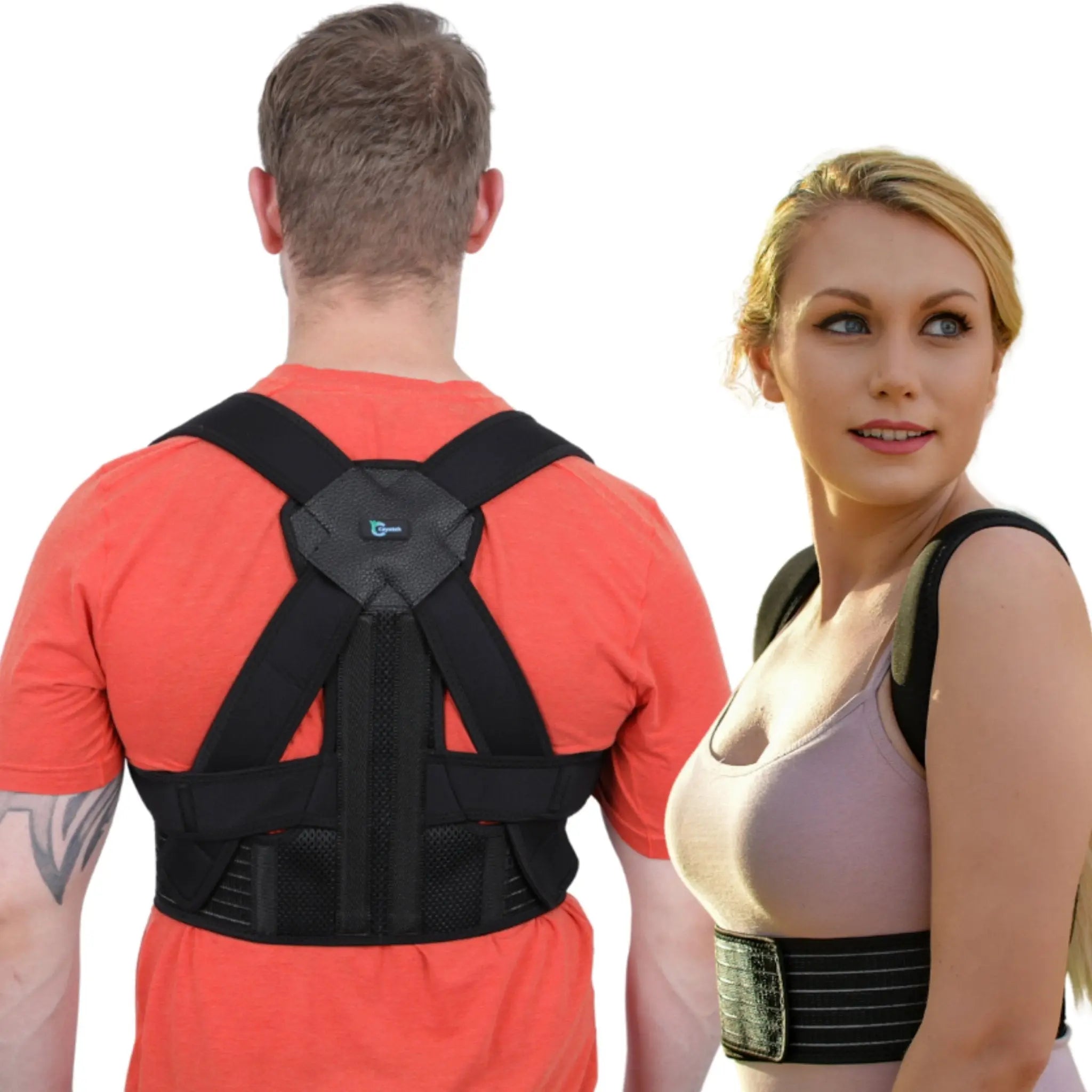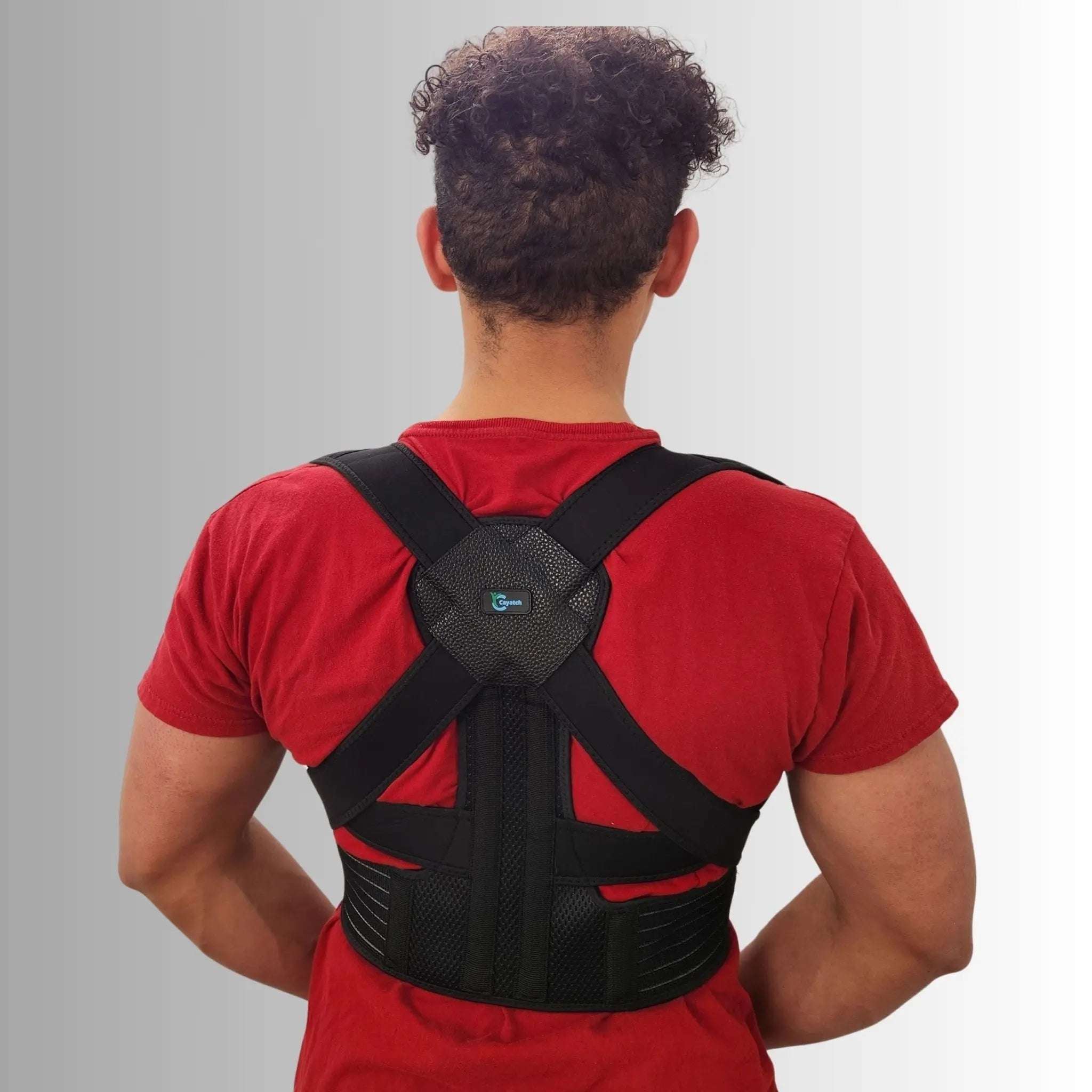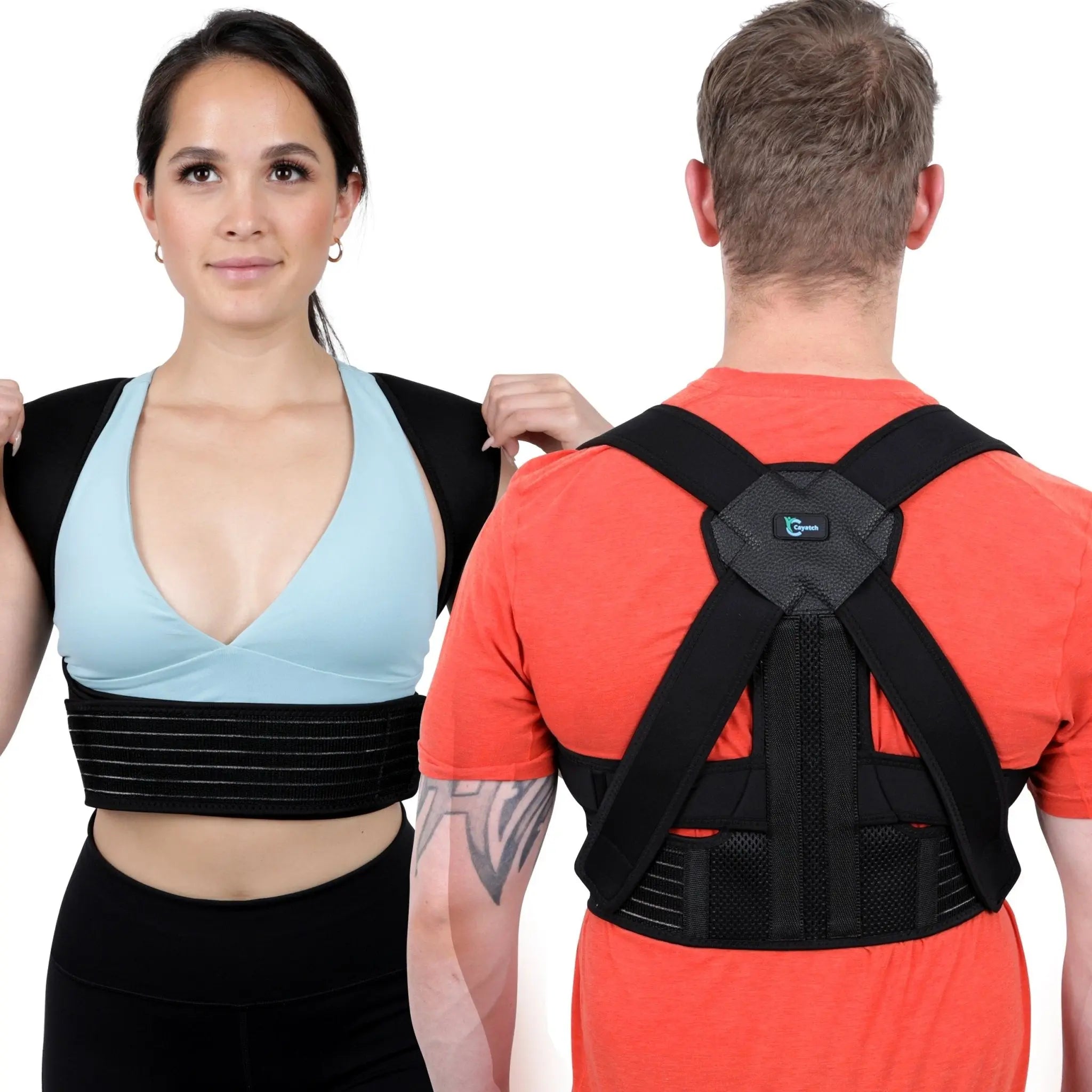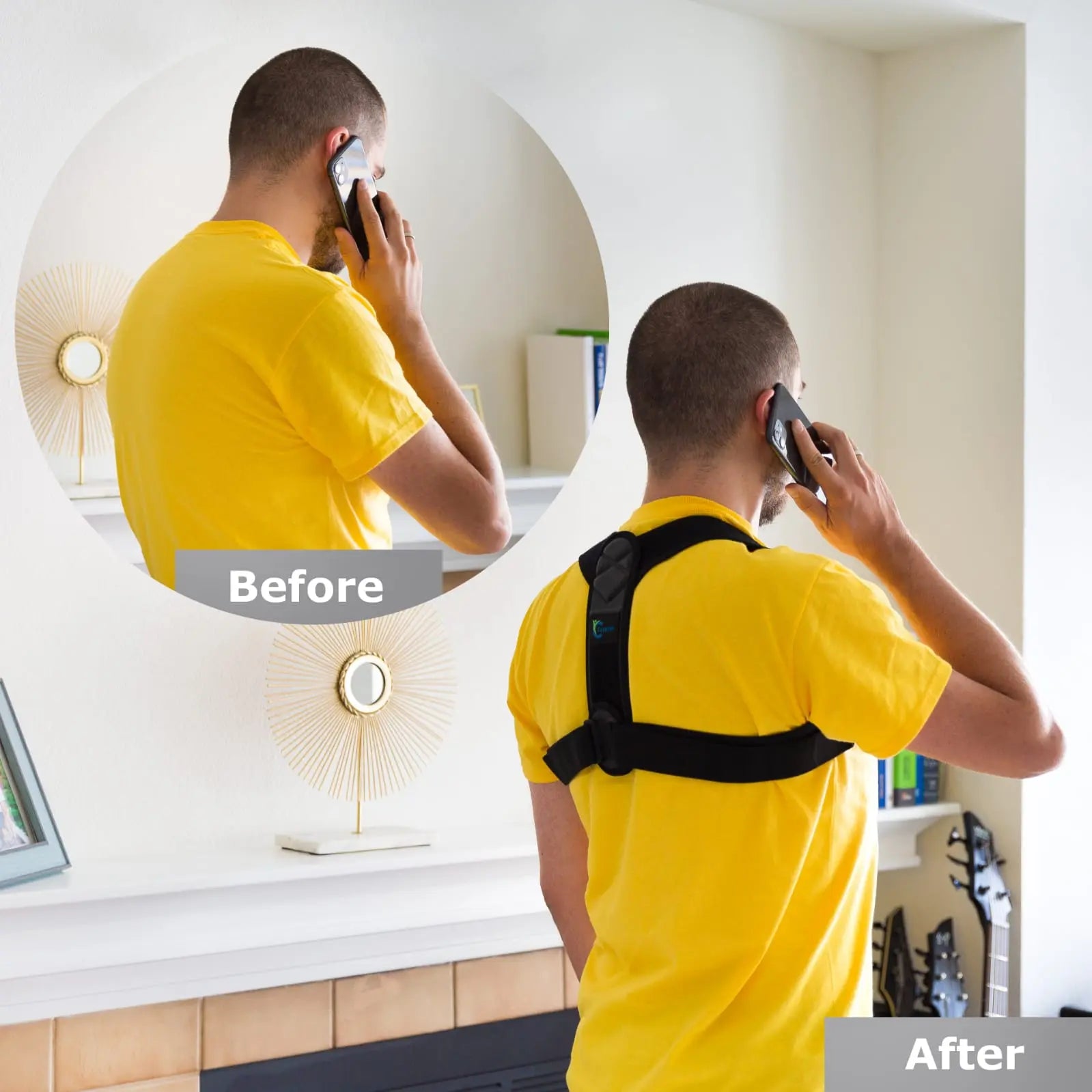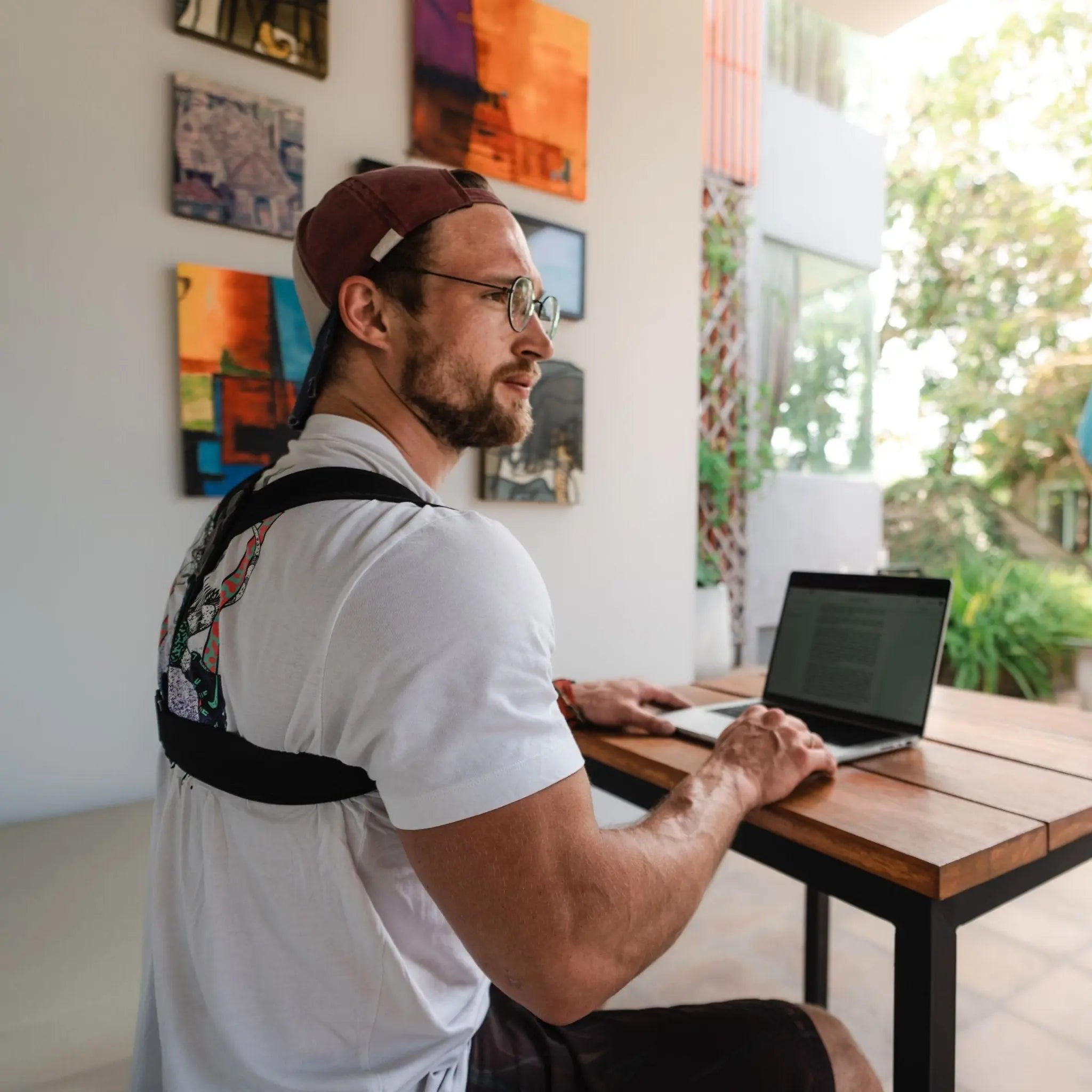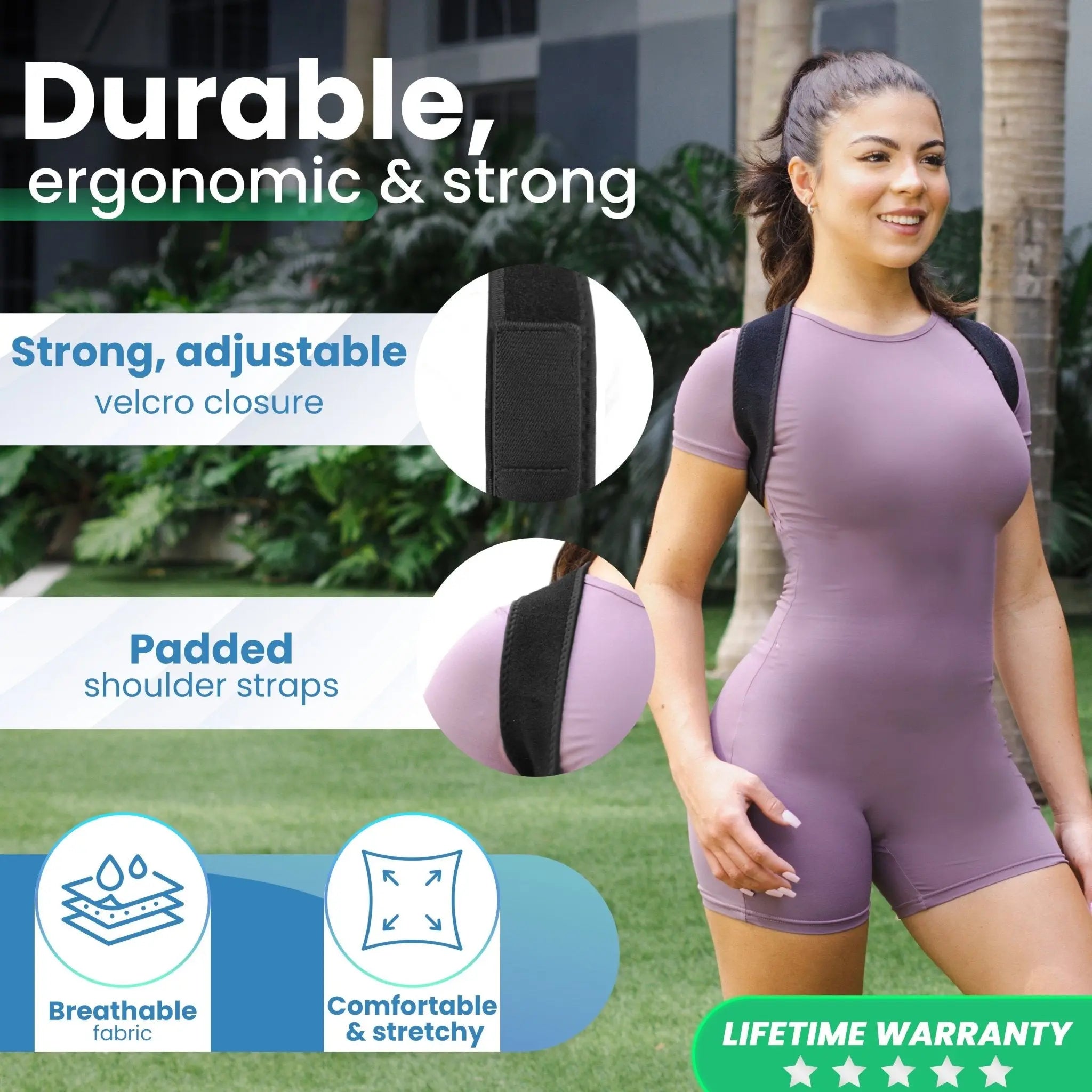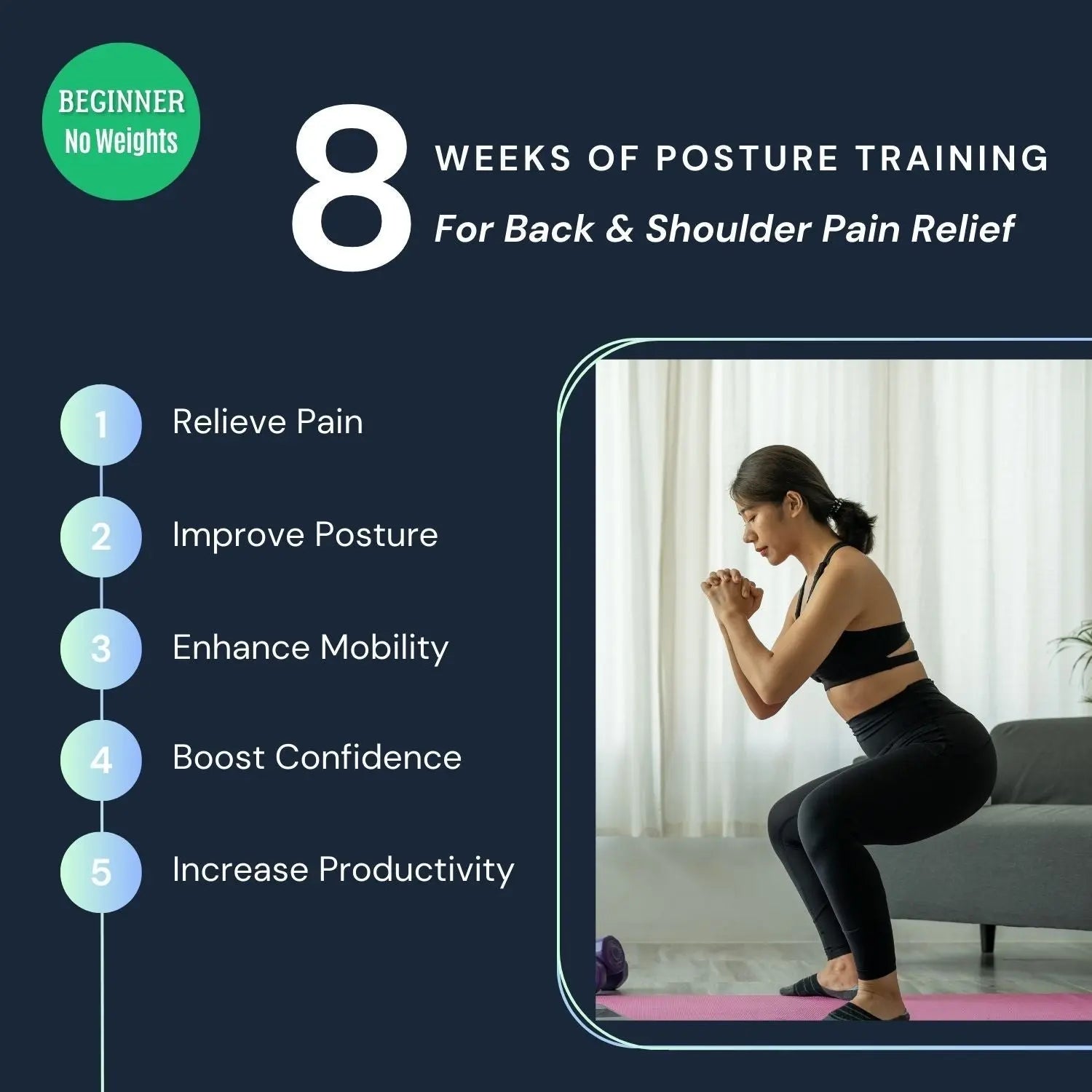How To Wear A Posture Corrector? Learn From The Experts

Maintaining good posture is necessary for overall health and well-being. Dr. Chris Lee, a chiropractor at True Health Chiropractic in Michigan says, “Good posture allows you to breathe deeply and can even affect your energy levels and mood.” On the other hand, poor posture such as slouching can contribute to discomfort, muscle strain, and long-term health issues.
Many people are unaware of the best ways to ensure proper posture, or they get so caught up in the tasks of everyday life that they completely forget about how they are sitting or standing. Wearing a device such as a posture corrector can take the mental effort out of ensuring proper posture. But what are the different types of posture correctors and most importantly, how do you wear a posture corrector?
First, it is important to learn about the types and functionality of each posture corrector. Each posture corrector comes with its own features and choosing the right one based on your sitting and standing styles is crucial. Second, it is important to know how to properly wear a posture corrector to get the maximum benefit.
This comprehensive guide explores the different types of posture correctors, the factors to consider when buying a posture corrector, and details the step-by-step process of wearing one.
Types & Functionality of Posture Correctors

There are various posture correctors in the form of belts and braces to help address different postural problems. Each one is best suited for specific problems and using the wrong corrector can lead to worse problems instead of helping. For example, you don't want to use a core muscle support corrector if you have shoulder pain.
Here we explore the different types of posture correctors.
1. Cross-back Elastic Braces
Cross-back elastic braces are designed for comfort. They support the back, chest, and clavicle, ensuring proper alignment.
- Comfortable to wear with adjustable shoulder straps.
- Supports back, chest, and clavicle.
- Aids in proper spine alignment.
2. Molded Upper Back Braces
Molded Upper Back Braces are designed to target the upper back. They provide support and alignment for the thoracic spine. These braces are molded to fit the natural curvature of the upper back, offering comfort and assistance in correcting posture related issues in that region.
- Supports posture by resting between shoulder blades.
- Provides better overall support.
- Helps align the thoracic spine.
3. Longline Back Braces
Longline Back Braces are designed to provide comprehensive back support. These braces typically cover the lumbar and thoracic regions, promoting proper posture and spinal alignment. They are designed to be worn for extended periods, offering stability in back-related discomfort.
- Ideal for extremely poor posture or chronic back pain.
- Supports the entire back from hip to neck.
- Adjustable but more restrictive.
- Effective for treating poor posture.
4. Electronic Posture Reminders
Electronic Posture Reminders are designed to alert users when they deviate from proper posture. These electronics can be worn or attached to clothing, periodically signaling or vibrating to remind individuals to maintain correct alignment. They encourage better posture habits throughout the day.
- Wearable device for less physical support.
- Rests on the upper back.
- Vibrates to alert slouching.
- Trains you to sit up straighter with constant reminders.
Choosing the Right Posture Corrector

Choosing the right posture corrector is imperative to maximize the benefits and improve posture and back pain. To select the perfect one for you, there are several factors to consider.
1. Assess Your Postural Need
Before choosing a posture corrector, assess your specific postural needs. Understanding your posture requirements will help you narrow down the type of corrector that will be most effective for you.
For example, if upper back support is crucial, a molded upper back brace will be more suitable, while a longline back brace provides comprehensive support for the entire back.
2. Comfort is Key
Wearing a posture corrector consistently is essential for it to be effective. Therefore, comfort should be a top priority when choosing one. Select correctors made from breathable materials that won't cause irritation or discomfort.
Adjustable straps and customizable features are also beneficial. These features allow you to adjust the fit to your body for maximum comfort throughout the day.
3. Consider Your Lifestyle
Consider your daily activities and lifestyle when selecting a corrector. If you lead an active lifestyle, you'll need a corrector that supports you without restricting movement.
On the other hand, if you have a desk job that involves prolonged sitting, you might benefit from a corrector that promotes proper alignment while seated.
4. Level of Support
Different correctors offer varying levels of support. Electronic posture reminders gently alert you to avoid slouching in a sitting or standing position.
For more significant concerns, a longline back brace or molded upper back brace may provide the required support.
5. Gradual Adjustment
Posture correction requires time and consistency. Look for a corrector that assists in gradual adjustment to avoid discomfort or potential harm.
Devices with adjustable features, such as straps and tension settings, allow you to ease into the correction process. They prevent unnecessary strain on your muscles.
6. Quality & Durability
Investing in a high-quality corrector is crucial for long-term effectiveness. Check the materials used, paying attention to durability and how well the device is constructed.
A well-made corrector is more likely to withstand daily wear and provide reliable support over an extended period.
7. Consult a Professional
Seek guidance from a healthcare professional or physical therapist. They can assess your specific posture issues and recommend the most appropriate corrector for your needs.
Professional advice ensures you choose a device that aligns with existing health conditions.
How to Use a Posture Corrector

By following the simple steps below, you can effectively incorporate a posture corrector into your routine.
Step 01: Choose the Right Size
Select a corrector that fits snugly but comfortably around your shoulders and upper back. Follow the sizing guidelines provided by the manufacturer.
Step 02: Put It on Correctly
Slip the corrector over your shoulders like a backpack. Ensure the straps rest comfortably on your shoulders. Check that the primary support is centered on your upper back.
Step 03: Adjust the Straps
Use any adjustable straps or fasteners to customize the tightness. Ensure a snug fit without causing discomfort or restricting breathing. The corrector should gently pull your shoulders outward and backward.
Step 04: Start Gradually
Initially, wear the posture corrector for short periods, such as 15-30 minutes at a time. Allow your body to adapt gradually to the new posture and avoid overstraining.
Step 05: Check Your Alignment
Stand before a mirror to assess your posture while wearing the corrector. Make sure that your shoulders are pulled back, and your spine is more upright.
Step 06: Incorporate into Daily Activities
Wear the corrector during various daily activities, such as working at a desk, walking, or doing light exercises. This helps reinforce proper posture throughout your routine.
Step 07: Increase Wear Time Slowly
As your body becomes familiar to wearing the corrector, gradually increase the wearing time. Aim for longer intervals, starting with 30 minutes to an hour at a stretch, however, never wear it continuously for more than 4 hours.
Step 08: Listen to Your Body
Pay attention to any discomfort or signs of strain. If you experience pain, loosen the straps or take a break. It's crucial to prioritize comfort and avoid pushing your body too hard.
Step 09: Consistency is Key
For effective results, consistency matters. Wear the posture corrector regularly. At the same time, avoid wearing it for long periods initially. Short, consistent use is more beneficial than sporadic, prolonged use.
Step 10: Combine with Posture Exercises
Wear the posture corrector while doing postural exercises to strengthen supporting muscles. This approach enhances the effectiveness of the corrector.
Step 11: Consult a Professional
If you have any concerns or pre-existing health conditions, consult a healthcare professional before using a corrector. They can provide personalized guidance.
Maintaining Good Posture Beyond the Corrector

Wearing a posture corrector is a valuable step toward improving posture. However, its effectiveness can be significantly enhanced by incorporating exercises, stretches, and mindful habits into your daily routine.
1. Exercise for Strengthening Core Muscles
A strong core is fundamental to maintaining good posture. Include exercises that target the abdominal muscles, obliques, and lower back.
Such exercises include planks, abdominal crunches, and leg raises. These exercises help stabilize the spine and reduce slouching.
2. Stretching for Flexibility
Flexibility is crucial in preventing stiffness and promoting proper posture. Add stretches aiming for the chest, shoulders, and hip flexors.
Chest openers, shoulder rolls, and hip flexor stretches can improve flexibility and prevent the effects of prolonged sitting.
3. Mindful Sitting and Standing
Practice mindfulness when sitting and standing to reinforce good sitting and standing habits. When seated, ensure your feet are flat on the floor and your back is against the chair.
Avoid crossing your legs and maintain a slight bend in your knees. When standing, evenly distribute your weight on both feet and relax your shoulders.
4. Yoga and Pilates
Consider adding yoga or Pilates to your fitness routine. These practices focus on core strength, flexibility, and body awareness. Poses and movements in yoga and Pilates encourage proper alignment.
5. Regular Breaks and Movement
Take regular breaks from prolonged sitting or standing. Set a timer to remind yourself to stand up, stretch, and move around. Simple neck rotations, shoulder rolls, and forward bends can remove stiffness and maintain flexibility.
Frequently Asked Questions (FAQs)
Is it okay to use posture corrector everyday?
It is okay to wear a posture corrector every day, however, it is advised to initially wear the posture corrector 30 minutes to one hour a day and slowly increase to up to four hours a day. It takes time for your body to adjust so if you wear it continuously for extended periods, it may do more harm than good.
How long should you wear a posture corrector per day?
Initially, you can start by wearing it for 30 minutes to one hour a day. Gradually increase the duration but don’t wear it for more than four hours a day.
How long do you have to wear a posture corrector to see results?
You can see visible changes within 3 weeks of using a posture corrector consistently. Remember consistency is key but be cautious when first starting to use a posture corrector.
Wrapping It Up
Posture correctors, including braces and belts, are valuable non-invasive tools for achieving good sitting and standing habits. Selecting the correct device is important according to your specific postural needs.
Incorporate targeted exercises that strengthen the muscles essential for maintaining proper body alignment to amplify the effects of the posture corrector. Moreover, consistent use of your corrector enables you to achieve improved posture, contributing to overall well-being.























